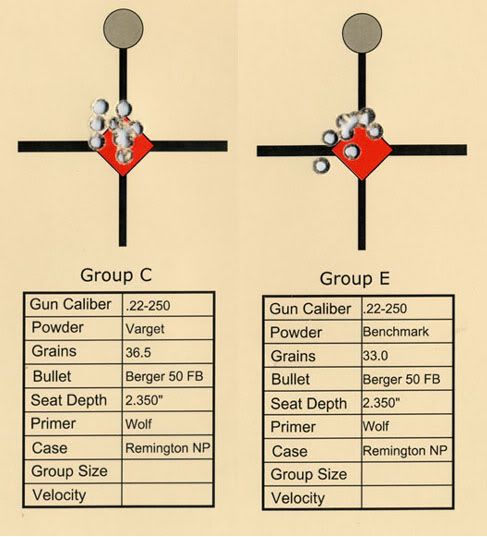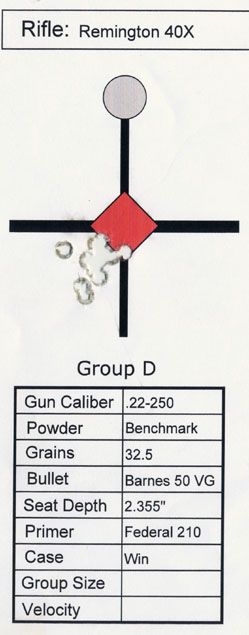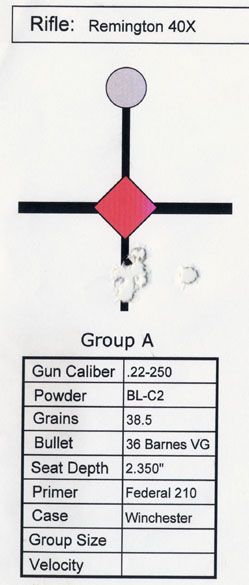Being limited to lead free bullets for hunting, I found that those bullets are more accurate than the cup and lead core variety, but also require a faster twist. My most used bullet in the .22-250 Remington and .22-250 Ackley is Barnes 50 grain Varmint Grenade. I have tried a 1:10" twist for the .22-250 Remington, and a 1:9" twist for the .22-250 Ackley, with the 1:9" twist producing the tightest groups. Both barrels are Pac-Nor Super Match SS varmint contour one on a Remington 40X and the other a Remington 700 prefit installed with a barrel nut.
Using the JBM Stability Calculator we find that the 0.857" long 50 grain Varmint Grenade at an average velocity of 3,650 fps, in the 1:10" twist has a Stability Factor of 1.223, or marginally stable. While in the 1:9" twist the Stability Factor increases to 1.510, or stable. The results mirror these numbers in my rifles, although in 24" barrels. Were I to build a pistol on my Wichita Bolt Action Silhouette Pistol, with a 15" .22-250 barrel, I would select the 1:9" twist as that same long bullet would remain stable from 2500 fps (1.331 S.F,) to 3000 fps (1.414 S.F.), with other weight and shorter length bullets fairing just as well or better.
I have another .22-250 Remington barrel with a 1:12" twist that will not shoot the 50 grain Varmint Grenade too well, but will handle the Berger 50 grain flat base bullet as shown below in two test targets after installation. The red diamonds are 0.5" on a side:
We should also not discount the 1:10" twist for the long 50 grain Varmint Grenade, while it may be marginally stable, a ten shot group at 100 yards provides some utility as a varmint rifle:
Switching to the 36 grain Varmint Grenade in the 1:10" twist shows how additional stability will tighten groups, although the lighter bullet decays quicker over longer ranges:
So, my advice is to select the 1:10" twist at the minimum, and the 1:9" twist for the greatest range of bullet weights and lengths. I have found that erring with a too slow twist can not be compensated satisfactorily by adjusting loads with lighter, shorter bullets, while the faster twists handle everything better.







